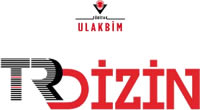Somut Olmayan Kültürel Miras Araştırmalarında Küresel Trend: Bibliyometrik Bir Analiz (Global Trend on Research of Intangible Cultural Heritage: A Bibliometric Analysis)
DOI:
https://doi.org/10.15659/ankad.v7i2.241Anahtar Kelimeler:
Somut olmayan kültürel miras- SOKÜM- bibliyometrik analiz- VOSviewerÖzet
Somut olmayan kültürel miras (SOKÜM), 2003 yılında UNESCO tarafından hazırlanan ve pek çok ülke tarafından imzalanan Somut Olmayan Kültürel Mirasın Korunması Sözleşmesinden bu yana çok sayıda bilim insanının ilgi alanına giren konulardan biri olmuştur. Bu çalışma, “Somut olmayan kültürel miras (SOKÜM) üzerine yapılan çalışmalarda nasıl bir eğilim görülmektedir?” sorusuna yanıt aramayı amaçlamaktadır. Bu amaca yönelik, sistematik bir literatür taraması yapılmış ve araştırmada nicel bibliyometrik analiz metodu kullanılmıştır. Çalışmada Web of Science (WoS) çekirdek veri tabanından SOKÜM ile ilgili toplam 645 makaleye ulaşılmıştır. Bütün makalelerin bibliyometrik analizi için VOSviewer analiz programı kullanılmıştır. Program aracılığıyla, çalışmaların anahtar kelimeleri ve özetlerinde yer verilen kavramların neler olduğu, en çok atıfa sahip yazarların kimler olduğu, yayınların yıl ve ülke bilgileri gibi özellikler analiz edilmiş ve elde edilen sonuçlar görsel olarak sunulmuştur. Çalışma sonucunda, yazar atıf ve eserlerine ilişkin bir tutarlılığın olmadığı; çalışmaların daha çok kültürel miras, turizm, sürdürülebilirlik, kimlik, otantiklik gibi kavramlarla ilişkili olarak yapıldığı tespit edilmiştir. Ayrıca 2003 yılından bu yana geçen sürede yapılan araştırmaların sayısında dramatik bir yükselişin olduğu; çalışmaların Çin, İngiltere, ABD, İspanya gibi yüksek gelirli ülkelerde daha fazla yapıldığı ve en fazla yayınlandığı derginin Sustainability, yayıncının ise MDPI olduğu sonuçlarına ulaşılmıştır.
Referanslar
Aikawa, N. (2004). An historical overview of the preparation of the UNESCO International Convention for the Safeguarding of the Intangible Cultural Heritage. Museum international, 56(1‐2), 137-149. https://doi.org/10.1111/j.1350-0775.2004.00468.x
Álvarez-García, J., Maldonado-Erazo, C. P., Del Río-Rama, M. D. L. C., & Castellano-Álvarez,
F. J. (2019). Cultural heritage and tourism basis for regional development: mapping of scientific coverage. Sustainability, 11(21), 6034. https://doi.org/10.3390/su11216034
Andrés, A. (2009). Measuring academic research: How to undertake a bibliometric study. Chandos Publishing.
Barbara J. (2022). Re-live history: An immersive virtual reality learning experience of prehistoric intangible cultural heritage. Front. Educ. 7:1032108. https://doi.org/10.3389/feduc.2022.1032108
Barghi, R., Zakaria, Z., Hamzah, A., & Hashim, N. H. (2017). Heritage education in the primary school standard curriculum of Malaysia. Teaching and Teacher Education, 61, 124-131. https://doi.org/10.1016/j.tate.2016.10.012
Baytok, A., Boyraz, M. & Başar, B. (2021). Somut olmayan kültürel miras konulu bilimsel yayınların veri görselleştirme tekniği ile bibliyometrik analizi. Güncel Turizm Araştırmaları Dergisi, 5(2), 246-262. https://doi.org/10.32572/guntad.907746
Castro-Calviño, L., Rodríguez-Medina, J., & López-Facal, R. (2021). Educación patrimonial para una ciudadanía participativa. Evaluación de resultados de aprendizaje del alumnado en el programa Patrimonializarte. Revista Electrónica Interuniversitaria de Formación del Profesorado, 24(1). https://doi.org/10.6018/reifop.444881
Çetin, T. (2010). Cumalıkızık köyünde kültürel miras ve turizm algısı. Milli Folklor, 11(87). 181-190.
Dang, Q., Luo, Z., Ouyang, C., Wang, L., & Xie, M. (2021). Intangible cultural heritage in China: a visual analysis of research hotspots, frontiers, and trends using citeSpace. Sustainability, 13(17), 9865. https://doi.org/10.3390/su13179865
Donthu, N., Kumar, S., Mukherjee, D., Pandey, N., & Lim, W. M. (2021). How to conduct a bibliometric analysis: An overview and guidelines. Journal of Business Research, 133, 285-296. https://doi.org/10.1016/j.jbusres.2021.04.070
Esfehani, M. H. (2019). Intangible cultural heritage in tourism strategy. ın experiencing persian heritage. Emerald Publishing Limited.
Esfehani, M. H., & Albrecht, J. N. (2018). Roles of intangible cultural heritage in tourism in natural protected areas. Journal of heritage tourism, 13(1), 15-29. https://doi.org/10.1080/1743873X.2016.1245735
Ferrer-Yulfo, A. (2022). Transforming museum education through ıntangible cultural
heritage. Journal of Museum Education, 47(3), 319-330. https://doi.org/10.1080/10598650.2022.2080966
Godinho, F. C. M. (2022). Trends in the scientific production on intangible cultural heritage, a bibliometric analysis. [Doctoral dissertation]. Universidade Nova de Lisboa.
Güngör, E. (2011). Kültürü Değişmesi ve milliyetçilik. (17. Baskı). Ötüken Neşriyat A.Ş.
Gürel, D., & Çetin, T. (2018). Sosyal bilgiler dersi ve kültür aktarımında edindiği rol üzerine bir inceleme. AJELI-Anatolian Journal of Educational Leadership and Instruction, 6(2), 22-40. https://dergipark.org.tr/en/pub/ajeli/issue/41881/474998
Gürel, D., & Çetin, T. (2019a). Intangible cultural heritage attitude scale: validity and reliability study. Bartın University Journal of Faculty of Education, 8(1), 82-102. https://doi.org/10.14686/buefad.465604
Gürel, D., & Çetin, T. (2019b). A qualitative study on the opinions of 7th grade students on intangible cultural heritage. Review of International Geographical Education Online, 9(1), 36-62. https://doi.org/10.33403/rigeo.573470
Hallinger, P., & Kovačević, J. (2019). A bibliometric review of research on educational administration: Science mapping the literature, 1960 to 2018. Review of Educational Research, 89(3), 335-369, https://doi.org/10.3102/0034654319830380
Juarez, G. F. (2013). The" Tio" is deaf: The Bolivian miners and the intangible cultural heritage. Aibr-Revista de Antropologia Iberoamericana, 8(3), 303-322.
Karabaşa, S. (2014). Uygulamaları açısından somut olmayan kültürel miras ve folklor. Folklor/Edebiyat, 20(80), 99-105.
Karakul, Ö. (2019). The effects of tourism on traditional craftsmanship for the sustainable development of historic environments. European Journal of Sustainable Development, 8(4), 380-380. https://doi.org/10.14207/ejsd.2019.v8n4p380
Kasapoğlu Akyol, P. (2015). Somut olmayan kültürel miras (SOKÜM) ve eğitim: Halk Kültürü Dersi örneği. [Doctoral dissertation]. Hacettepe University.
Kolaç, E. (2009). Somut olmayan kültürel mirası koruma, bilinç ve duyarlılık oluşturmada Türkçe eğitiminin önemi. Milli Folklor, 82(21), 19–31.
Kong, F. (2020). Application of artificial intelligence in modern art teaching. International Journal of Emerging Technologies in Learning (iJET), 15(13), 238-251. Retrieved from https://www.learntechlib.org/p/217610/
Logan, W. S. (2007). Closing Pandora's box: human rights conundrums in cultural heritage protection. In H. Silverman & D.F. Ruggles (Eds.), Cultural heritage and human rights (pp. 33–52). Springer New York.
Marschall, S. (2012). Memory and identity in South Africa: Contradictions and ambiguities in the process of post-apartheid memorialization. Visual Anthropology, 25(3), 189-204. https://doi.org/10.1080/08949468.2012.665335
Oğuz, M. Ö. (2008). Çağdaş̧ kentin kültürü ve somut olmayan kültürel miras. Türkiye Bilimler Akademisi.
Oğuz, M. Ö. (2013). Terim olarak somut olmayan kültürel miras. Milli Folklor, 25(100), 5-13.
Pelit, E., & Türkoğlu, T. (2019). Somut olmayan kültürel miras değerlerinin turizme yansımaları ebru sanatı üzerine bir inceleme. Güncel Turizm Araştırmaları Dergisi, 3(1), 101-118. https://doi.org/10.32572/guntad.463910
Qiu, Q. (2023). Identifying the role of intangible cultural heritage in distinguishing cities: A social media study of heritage, place, and sense in Guangzhou, China. Journal of Destination Marketing & Management, 27, 100764. https://doi.org/10.1016/j.jdmm.2023.100764
Sangchumnong, A., & Kozak, M. (2018). Sustainable cultural heritage tourism at ban Wangka Village, Thailand. Anatolia, 29(2), 183-193.
https://doi.org/10.1080/13032917.2017.1414435
Savova, N. D. (2009). Heritage Kinaesthetics: Local Constructivism and UNESCO's Intangible-Tangible Politics at a" Favela" Museum. Anthropological Quarterly, 547-
Retrieved from https://www.jstor.org/stable/25488282
Shahab, S. (2021). Crafting displacement: Reconfigurations of heritage among Syrian artisans in Amman. Journal of Material Culture, 26(4), 382-402. https://doi.org/10.1177/13591835211042495
Somut Olmayan Kültürel Mirasın Korunması Sözleşmesi (2003). Resmî Gazete: Somut Olmayan Kültürel Mirasın Korunması Sözleşmesi. Retrieved form: https://www.resmigazete.gov.tr/eskiler/2006/03/20060311-2-1.pdf
Su, X., Li, X., & Kang, Y. (2019). A Bibliometric Analysis of Research on Intangible Cultural Heritage Using CiteSpace. SAGE Open, 9(2). 1-18. https://doi.org/10.1177/2158244019840119
Tavares, D. S., Alves, F. B., & Vásquez, I. B. (2021). The Relationship between Intangible Cultural Heritage and Urban Resilience: A Systematic Literature Review. Sustainability, 13(22), 12921. https://doi.org/10.3390/su132212921
Torrealba Alfonzo, G., & Navas Méndez, A. M. (2021). Bolivar's Sword: The Mapoyo and the Politics of Heritage‐Making in Venezuela. The Journal of Latin American and Caribbean Anthropology, 26(3-4), 386-407. https://doi.org/10.1111/jlca.12563
Turhan, M. (2010). Kültür Değişmeleri (Sosyal Psikolojik Açıdan Bir Tetkik). (6. Baskı). İstanbul: Çamlıca Yayınları.
Türker, A., & Çelik, İ. (2012). Somut olmayan kültürel miras unsurlarının turistik ürün olarak geliştirilmesine yönelik alternatif öneriler. Yeni Fikir Dergisi, 4(9), 86-98. Retrieved from https://dergipark.org.tr/en/pub/yenifikirjournal/issue/61742/923104
Ulusoy, K. (2011). Türk toplum hayatında yaşatılan kahve ve kahvehane kültürü. Milli Folklor Dergisi, 12(89), 159-169.
Van Eck, N., & Waltman, L. (2010). Software survey: VOSviewer, a computer program for bibliometric mapping. Scientometrics, 84(2), 523-538. https://doi.org/10.1007/s11192-009-0146-3
Wang, C. Y. (2019). Building a network for preserving intangible cultural heritage through education: A study of Indonesian Batik. International Journal of Art & Design Education, 38(2), 398-415. https://doi.org/10.1111/jade.12200
Wang, G. J. (2017). The fusion of foreign-related tourism English teaching and intangible cultural heritage based on network perspective. Agro Food Industry Hi-Tech, 28, 1778- 1782.
Yayınlanmış
Nasıl Atıf Yapılır
Sayı
Bölüm
Lisans
Telif Hakkı (c) 2024 Anadolu Kültürel Araştırmalar Dergisi (ANKAD)

Bu çalışma Creative Commons Attribution-NonCommercial 4.0 International License ile lisanslanmıştır.













